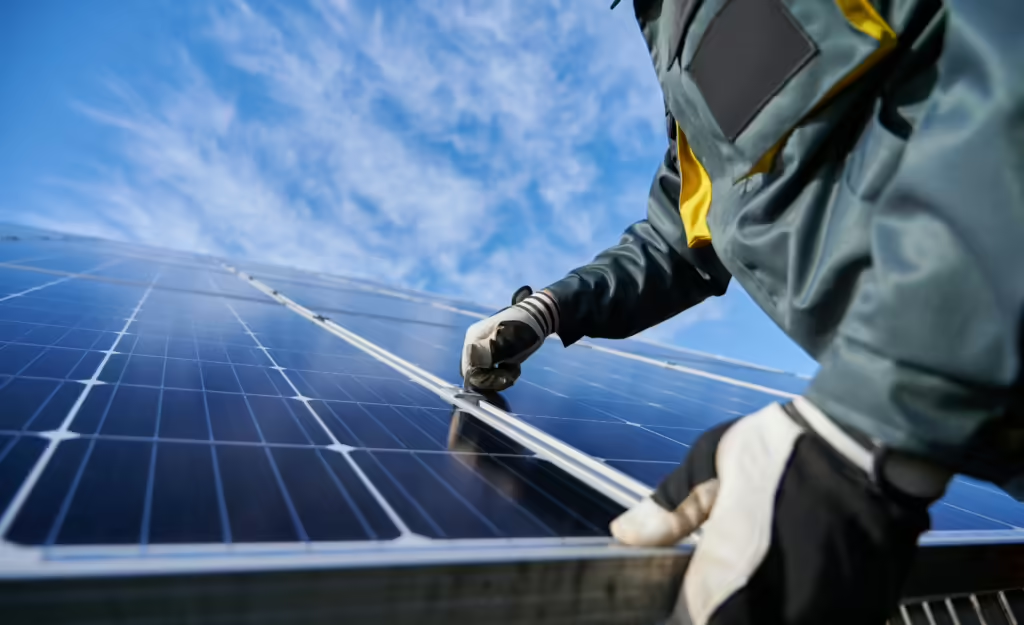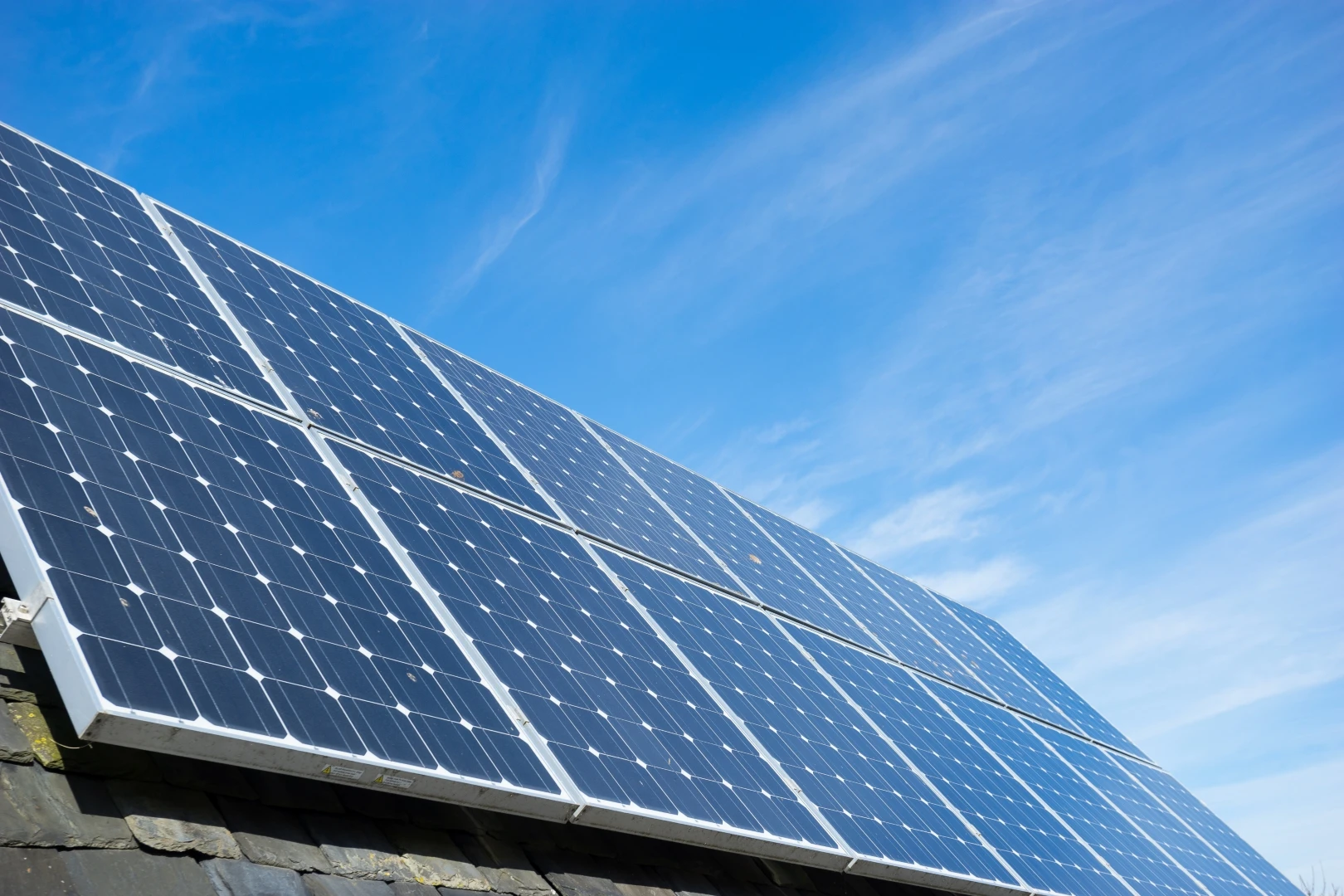Choosing the right types of solar panels for your home can be overwhelming with so many options available. Whether you’re looking to save on energy bills, reduce your carbon footprint, or make the most of your roof space, understanding the different types of solar panels is key. From high-efficiency monocrystalline panels to flexible thin-film options, each type offers its own unique set of benefits. In this blog, we’ll break down the various solar panel options to help you find the perfect match for your energy needs and budget.
4 Types of Solar Panels

1. Monocrystalline Solar Panels
If you’re looking for top-tier efficiency and a modern look, monocrystalline solar panels are the way to go. These panels are made from a single, pure silicon crystal, and they are the most efficient option. They convert more sunlight into electricity than other types. This means you get maximum power even with fewer panels, which makes them perfect for homes with limited roof space.
Beyond performance, monocrystalline panels have a sleek black appearance, blending seamlessly with most rooftops. While they come at a higher upfront cost, their durability and long-term energy savings make them a smart investment for homeowners looking to maximize their solar potential.
2. Polycrystalline Solar Panels
Polycrystalline solar panels offer a great balance between performance and price, making them an attractive choice for homeowners looking to invest in solar energy without breaking the bank. Unlike monocrystalline panels, polycrystalline panels are crafted from multiple silicon crystals. While this means they’re slightly less efficient in converting sunlight into electricity, they still pack a punch when it comes to performance—especially considering their more affordable price tag.
These types of solar panels are perfect for homeowners who want to take advantage of solar power without sacrificing too much on efficiency. While you may need more panels to generate the same amount of energy as monocrystalline, the lower cost makes polycrystalline panels a practical and cost-effective solution, especially for those with larger roof spaces or lower energy needs. It’s a smart choice for anyone who wants to reduce their carbon footprint while keeping their budget in check.
3. Thin-Film Solar Panels
Thin-film solar panels are the underdogs of the solar world that offer unique benefits that make them ideal for certain applications. These panels are lightweight, flexible, and thin, which makes them easy to install on a variety of surfaces, even curved ones. This flexibility opens up a world of possibilities, from commercial installations to portable solar setups.
While they are generally less efficient than other options, they shine in low-light conditions, like cloudy days or shaded areas. Their lower efficiency is often outweighed by their adaptability, making them an excellent choice for large-scale commercial projects, rooftops with less direct sunlight, or even mobile solar solutions, such as RVs and trailers. If you’re looking for a practical, versatile option that can fit unique spaces, thin-film panels may be the perfect solution to meet your energy needs.
4. PERC (Passivated Emitter and Rear Cell) Panels
If you’re seeking top performance with cutting-edge technology, PERC (Passivated Emitter and Rear Cell) solar panels take monocrystalline panels to the next level. By adding a layer to the back of the cells, PERC panels improve light absorption and increase efficiency, meaning they capture more sunlight and convert it into usable energy. This advanced design makes them an ideal choice for homeowners who want to maximize their energy production, especially when roof space is limited.
With their enhanced efficiency, PERC panels produce more power with fewer panels, allowing you to get the most out of your space and your investment. This makes them perfect for urban homes, small rooftops, or properties that want to minimize their carbon footprint while still reaping the long-term savings and benefits of solar energy. If you’re looking to boost your solar system’s performance, PERC panels offer the perfect combination of cutting-edge tech and practical results.

Choosing the Right Solar Panel for Your Needs
Here’s some factors to consider when choosing types of solar panels:
- Budget: Monocrystalline panels offer the highest efficiency but come at a higher price. Polycrystalline and thin-film options are more affordable but might require more panels for the same energy output. Consider both your immediate budget and the long-term savings potential.
- Efficiency: Efficiency is key to maximizing energy production, especially if you have limited roof space. Monocrystalline and PERC panels deliver high efficiency, while polycrystalline and thin-film offer slightly less power per panel but can still meet your needs, especially with more space.
- Space Availability: If you have limited space, consider panels with higher efficiency to get the most energy from fewer panels. Monocrystalline and PERC panels are ideal for small roofs, while polycrystalline may be better if space isn’t as much of a concern.
- Climate: Climate plays a role too. Thin-film panels perform better in low-light conditions, making them ideal for cloudy or shaded areas, while monocrystalline and PERC panels thrive in direct sunlight.
Weighing these factors will help you choose the solar panels that best match your needs, balancing budget, efficiency, and long-term savings.
Choose LGND Energy for Reliable Solar Panels
LGND Energy offers top-quality solar panels tailored for both residential and commercial needs. Our expert team will guide you through every step, from consultation to installation, ensuring a seamless transition to solar energy. By choosing us, you can reduce energy costs and contribute to a sustainable future. Contact us today to discover your solar potential and start your journey toward energy independence.



Follow Us